by Patruni Chidananda Sastry
The idea of art was something that I developed as I started learning about practices around me. I always used to be amused with the oddity of things in life. With my training in Indian classical dance early on, I was taught to see the world through the lens of how it needed to be seen. The idea of what is beauty vs what is reality helped me keep questioning time and again. With my approach to drag in which I appear as a suffocated art specimen, trying to rip the beauty apart from what the world liked to see, I was always seen as an unpredictable drag performer. Initially, I was questioned about my aesthetics but it took some time to educate people on the idea of Tranimal. However, the idea of creating art by myself was something that encouraged me to keep the ball rolling.
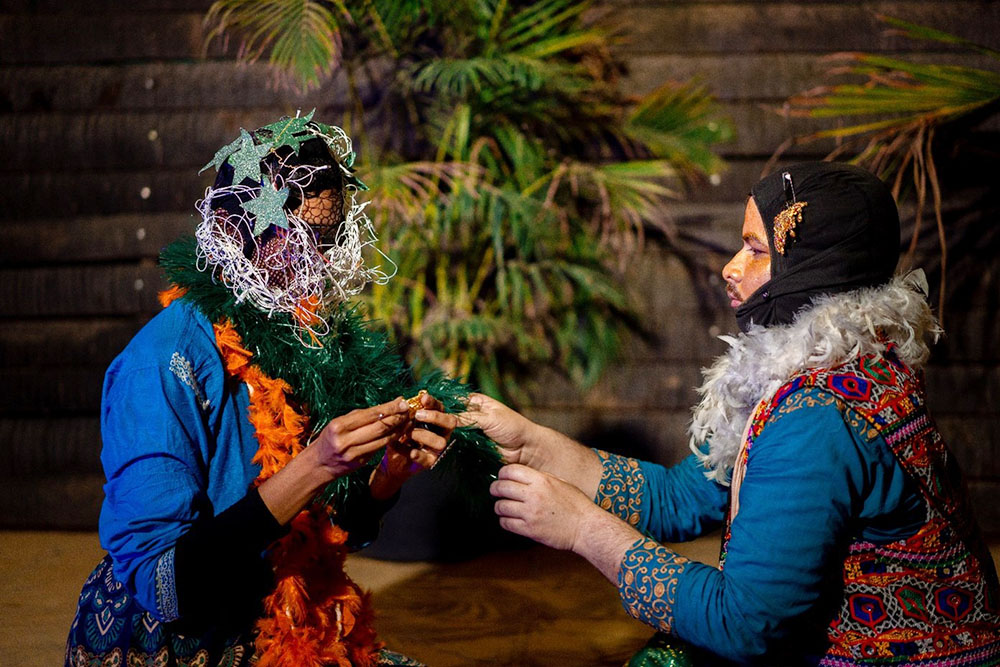
This pandemic has pushed all of us into the hardest time. With restrictions from having any human connection and getting locked in a house all alone, these times have been hard mentally for me to dissociate from my feelings. The idea of the human touch we couldn’t have has shown a great lack in making my art more and more restricted. Human touch is indeed a hope for any artist, and this pandemic has made it impossible to constantly create art without any physical interaction with others.
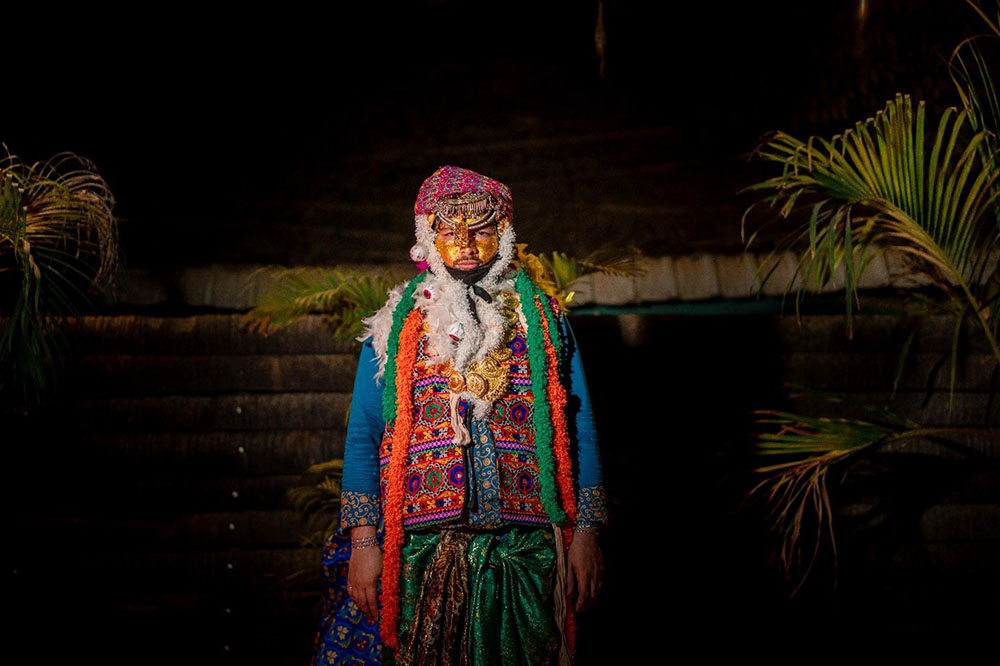
As the pandemic was imporving, and as places and spaces opened up (at the time of writing this—unfortunately this is no longer the case) and meeting people again became a reality for a short while, making my art more accessible became a possibility. However, I have always been possessive of my art, my interpretations, my looks, my creation and my mind in action to create drag for the year. This overt art obsession could soon be seen in my work. It was high time to take a breather and reciprocate the idea of collaborations.
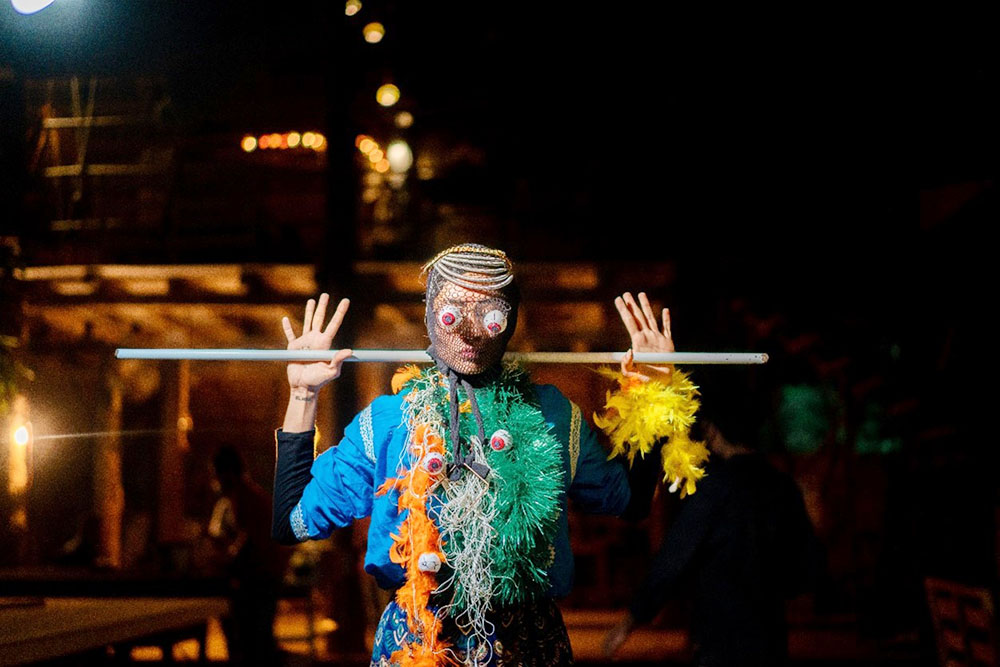
Drag is a collaborative art form, at one glace we see that drag is created by oneself, on the other hand, we see that drag involves more than one person to make a mark. This other person could be the fashion designer who makes your clothing, the creator of the wigs you use and the photographer who captures your image. This collaboration is what makes drag work. But, in my area, you could hardly see drag queens collaborating. Drag artists can be so particular with their image that they may not want to be touched by someone else’s creativity. In India, however, this idea of obsession is predominantly less, because of its healthy and creative Drag community which opens up a plethora of avenues to collaborate. This was the catalyst, which made me realise it was high time to exchange this creativity with some who could bring more synergy.
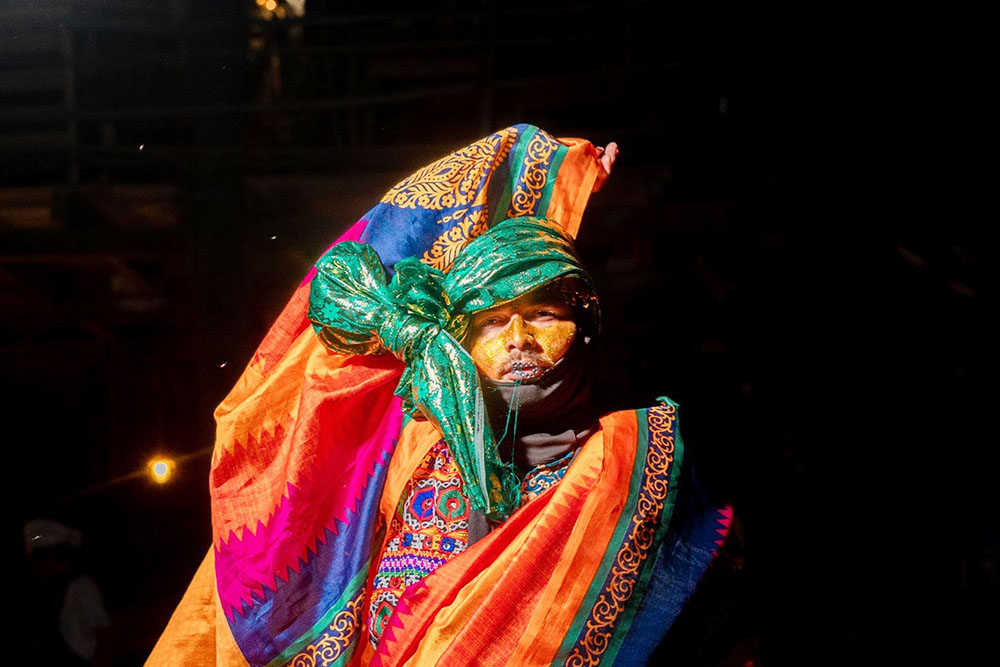
It was as I was thinking this that I bumped into Xen, a colleague and friend. Xen is a creative being who has been following my trajectory of drag, and she often shared energy to co-create an exchange of art. Being an AFAB person, I thought it would make a great difference in bringing two different bodies and create something for collaboration. The idea of collaboration was to exchange the energy of drag, something therapeutic with the flow to each other. Xen comes with the idea of structure, driven and mapped, whereas I come with a vision of dis-formed, unstructured and the randomness of art. It was indeed this paradigm shift envision of art that helped us create this piece.

We both came up with an open-air performance piece at a walk-in café called Paaka, in Hyderabad, with an open performance for a few walk-ins. ‘Drag Affair’ was what we called it, which would bring the aesthetics of the human touch to the art. With social distancing being the norm, this performance kicked off with the idea of co-creating Drag with each other by the viscosity of human touch. We had a pile of trash, clothes, broken jewelry, dresses, accessories, and makeup materials in front of us. The idea was to become each other’s muse. We become the canvas for each other to create our replica of our alter egos. Art was here to exchange.
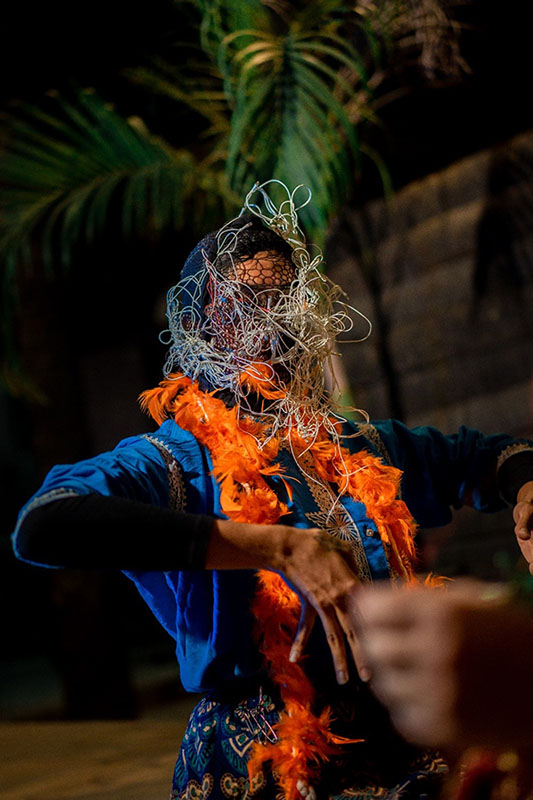
I picked up basic stockings, and covered her face while she used golden paint to paint mine. I decked her out with some trashy wires and bulbs as she added more glitter and gold to the attire. As we went on with the performance, I deliberated on sharing the idea of dis-formed art with her look, and she created a more beautified and dwelleth version of drag. The pile of trash we put on each other was used to create more of a dis-formed, ultra-fashionista postmodern drag looks for both of us.
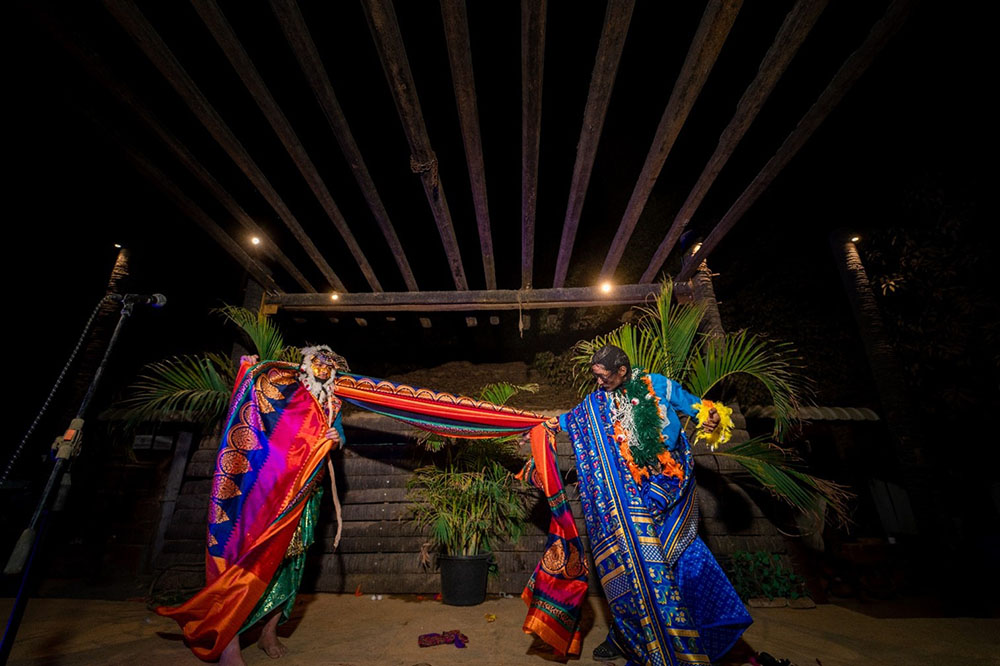
This entire process was captured by Akhil Komaravelli with pictures and stills to see how we shed the idea of social distancing and create cohesive art. In the entire process, we followed Covid norms by getting tested before and after the performance to ensure the co-art creation did not lead to any Covid transmission. The idea was to allow each other to open up our bodies which had been locked away for more than a year, unable to experience the art of another. The idea was to dive in and get a bodily experience for art in which you make your art upon someone else, all the while being a muse for their interpretation of art. The performance was therapeutic to be a part of, to witness, and to feel the process of self-surrendering to each other, as well as create trust to make art more dynamically.
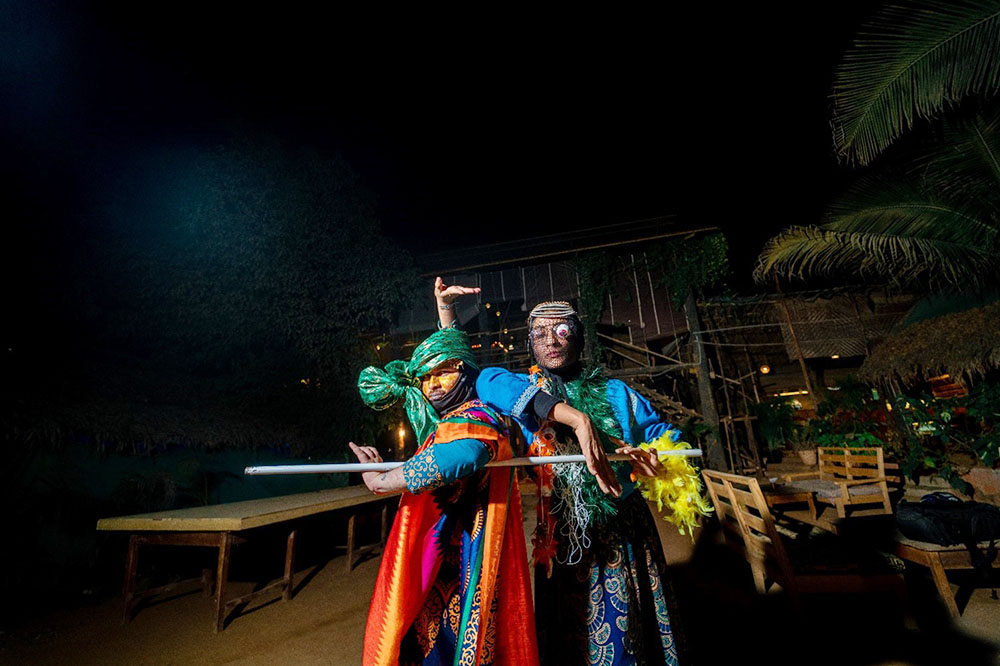
When we finished the process of dressing each other up, we could see our art on each other’s bodies, creating more dynamic images of gender-less, gender-bend drag. The creation blurred the biological gender skin we were in, and created a true neutral experience. This is what the power of drag is. Drag can be an art form to teach empathy, sisterhood, and also be therapeutic to address mental health and shared existence. Drag has opened new doors for me in seeing a way to reconnect people with each other, and share energies and build trust. This activity is a way in which we can teach the world the idea of empathy and blur more boundaries that keep us all away from one another.
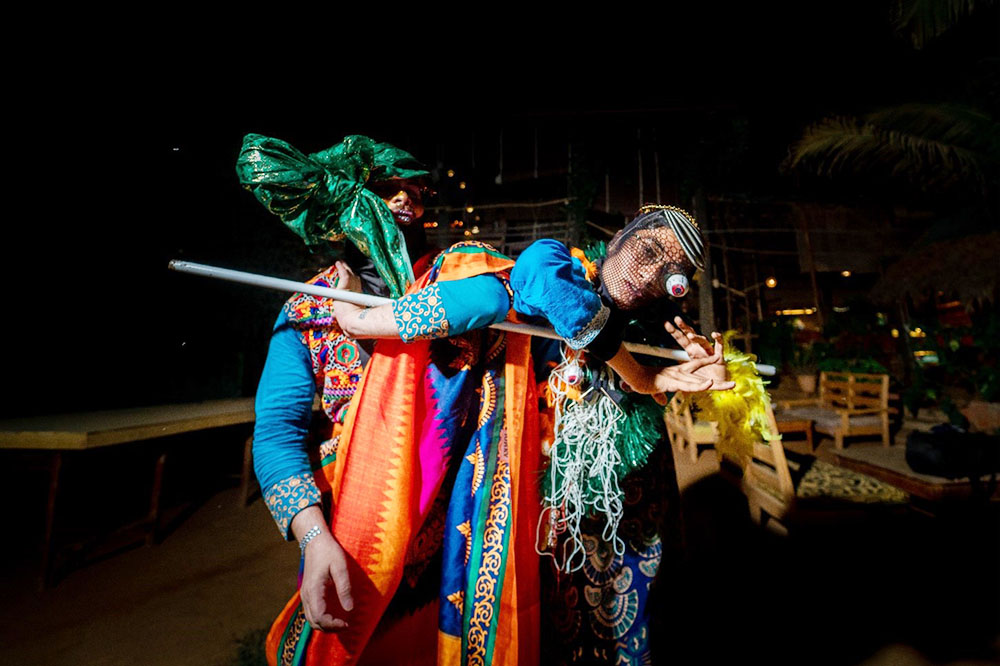
Pictures by Akhil Komaravelli

